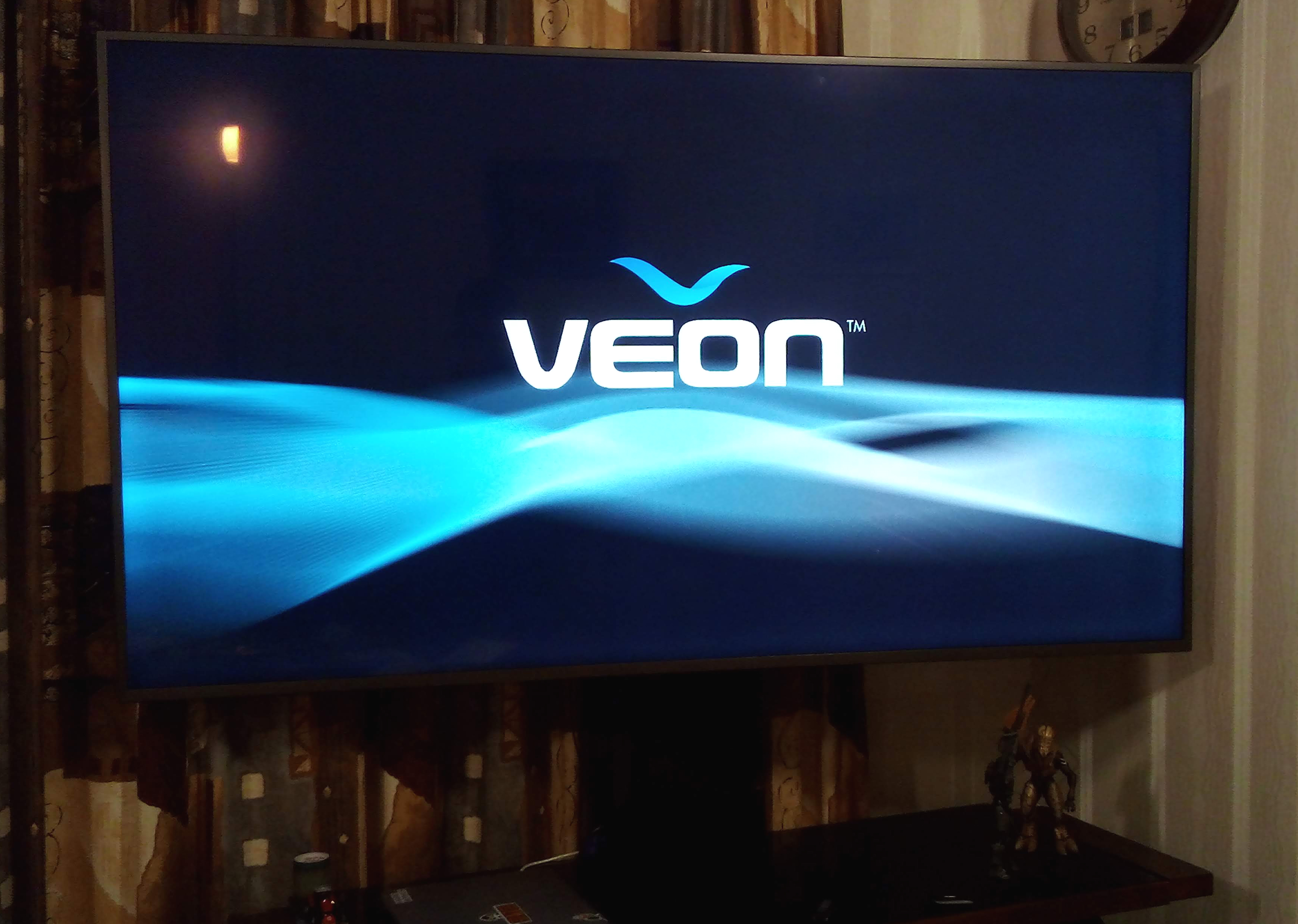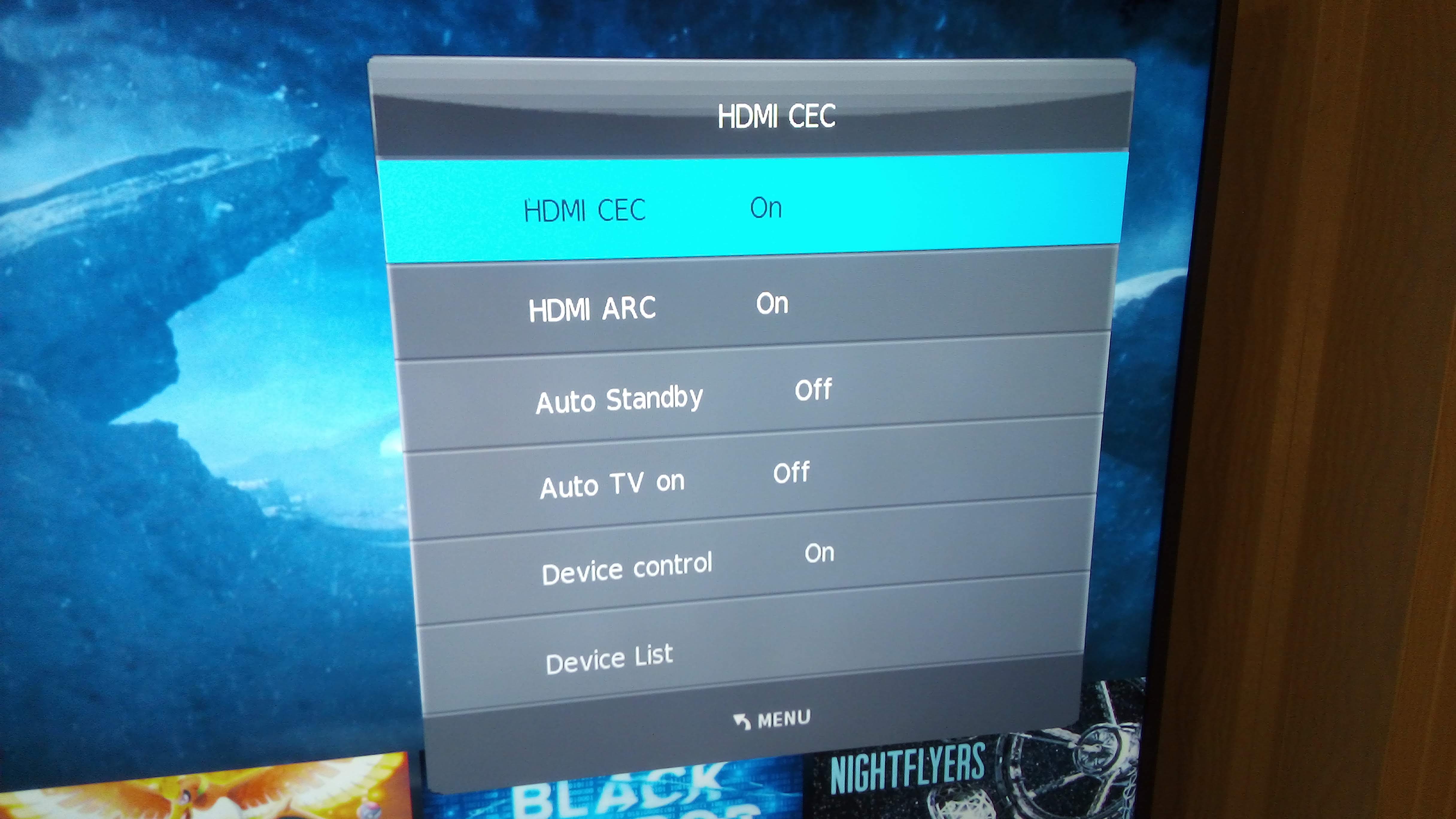Since restarting my blogging venture last year the post that I've received the most feedback on was my budget Veon TV review. I still get emails nearly a year later with people asking questions while they're looking into buying one, or wanting help with different settings and features. There is very little information on these TV's available online, The Warehouse doesn't provide any documentation and there are very few professional reviews available.
 Veon: A brand shrouded in mystery.
Veon: A brand shrouded in mystery.
Over the past few years I've had a few dealings with this ultra low cost brand, from my first 32” about 8 years ago to my recent acquisition of the rather large (65”) one now sitting in my lounge.
Because of these factors I've put together a FAQ, hopefully providing helpful information to people thinking about buying a Veon TV. If you can think of any other questions worth including, feel free to drop me a line.
Veon 4K TV FAQ
Do the 4K models actually support full 4K?
Yes, based on my experience they can take a full 3840x2160 (4K) resolution signal at 60hz. They also support HDCP 2.2 copy protection, meaning 4K BluRay players and most streaming devices for Netflix and YouTube work fully.
There are a variety of options to take full advantage of this. Some choices are the Chromecast Ultra, DishTV Android media players, Xbox One S or X, Playstation 4 Pro and the 5th generation Apple TV - most things that output at 4K pair well with these TV's. Devices that don't support 4K will also work perfectly fine, but just don't get to take advantage of the TV's full resolution.
 Streaming services like Netflix work very well.
Streaming services like Netflix work very well.
What features are built in?
Other than standard video signal inputs, the feature set is limited. Video playback from USB works, but doesn't support playing files at 4k resolution - the maximum appears to be 1080p. The built in TV tuner supports New Zealand Freeview in HD over a UHF aerial. Satellite Freeview support is not built in. There is limited functionality for recording Freeview TV to a USB drive, but this is limited to recording what is currently being watched.
There are some new Veon Smart TV models that are advertised as supporting Netflix and YouTube, but I haven't used one.
How is the sound quality?
The audio coming out of the built in speakers is fine for dialog on a talk show, or the evening news, but for movies and gaming it's not great. Fortunately, every Veon TV I've used has many options for connecting an external sound system - HDMI Audio Return Channel (ARC), digital optical out, analog line level out and a headphone jack.
Are the TVs wall mountable?
Yes, they work with a standard VESA mount. Based on listings online, 50 inch and smaller TVs use the 200mm by 200mm size mount, and the bigger TVs use 400mm by 200mm.
What's the 3 year warranty like?
Veon TVs come with a 3 year warranty against defects. If an issue develops you take the TV, along with a purchase receipt, into a Warehouse store - even if the TV was purchased online. At the store the TV will be plugged in and turned on to identify the defect. If it's clear there is a fault with the TV (at least a fault that isn't caused by user error, like a cricket bat impact) it will be sent away for assessment. From my experience it will either be repaired or replaced, or the purchase price will be refunded.
Keep in mind you will need the purchase receipt to make a warranty claim! As soon as you have that receipt in your hand take a snap of it with your phone, and keep that photo safe.
What are the optimal settings?
The menu isn't extensive, but going through and tweaking the settings is the best way to get the most out of these Veon TVs.
Picture settings
- Picture Mode: To get the best picture quality possible, the picture mode needs to be set to “User” and each option needs to be adjusted manually. Getting the perfect picture will need differing settings for different models, and also the viewing environment the TV will be used in. In my experience the most benefit comes from lowering the Sharpness setting to 0. Most other settings work well near 50, with the Contrast working well at 55, and the Brightness and Colour slightly below in the low 40s.
- Aspect Ratio: Generally, unless you are using older devices that don't output a widescreen image, this setting should always be set to “Just Scan”. This makes the TV use all of the incoming signal, without cropping the edges of the picture or adding any unnecessary image processing - this is the best option for most modern digital video devices. Old games consoles, VHS players and even early DVD players work well with a Veon TV, but this aspect ratio setting might need adjusting to get an undistorted picture with them.
- Colour Temperature: Keeping these Red, Green and Blue values all at 50 is OK, but I found bringing down the Red just a little to around 45 makes the picture a little more balanced.
- Noise Reduction: Unless you're using a really low quality video source, such as an older DVD player or home videos, this is best kept off.
Sound settings
- Sound Mode: Keeping this on the Standard preset is best for the internal speakers - adding more bass just adds distortion. If using an external speaker system, adjust the audio settings on that rather than the TV.
- Balance: If you only want sound coming out of one speaker for some reason? It's not a setting most people need to touch.
- Auto Volume: This setting is meant to keep the volume levels somewhat normalised, but I can't really notice it doing anything.
- Surround Sound: This adds an effect to the audio that is meant to “simulate” surround sound. I think it just makes everything sound like it was recorded in a large bathroom - not a very useful feature
- SPDIF Mode: This setting changes the audio output format that is sent over HDMI and digital optical. If using a two channel stereo system like a sound bar, set this to PCM. If you have a surround sound home theatre system then setting this to Auto will allow the TV to pass through 5.1 channel Dolby Digital surround sound.
- SPDIF Audio Delay: When using the digital sound outputs, this setting can be used to add a delay to the audio output to keep the picture in sync with the sound. Leave this on the default unless you notice issues with audio and video not lining up.
Option settings:
Here the settings are mainly about what language the menu and subtitles are in, but there are two settings here worth paying attention to: HDMI CEC and EDID.
HDMI CEC is a part of the HDMI connection that enables you to control devices, like DVD Players or Freeview boxes, using the TV's remote control. This is great at eliminating clutter, letting you control various HDMI devices all with one remote.
- HDMI CEC: Enables general CEC functionality
- HDMI ARC: Audio Return Channel. If you have a surround sound system or sound bar, you should connect it to the physical HDMI port on the Veon TV labeled “HDMI (ARC)” and turn this setting on. Using HDMI ARC will also enable the volume of the external sound system to be controlled with the Veon remote.
- Auto Standby or Auto TV On: Allows both for a Veon TV to turn on a connected HDMI device when it is turned on, and for a connected device to wake up the Veon TV from standby. This is great for allowing one button to turn on the TV, DVD Player and surround sound system together.
- Device Control: Enables the main point of CEC, allowing the Veon TV to control connected devices and vice versa. Generally, this must be enabled to allow other CEC based features to work.
- Device List: Shows a list of HDMI devices the TV has detected that support CEC. If you have an HDMI device that isn't listed here, try going into the menu options for that device and find a setting to turn CEC on. Keep in mind that not all HDMI devices support CEC.
 CEC can allow easy control of HDMI devices with just one remote.
CEC can allow easy control of HDMI devices with just one remote.
EDID, or Extended Display Identification Data, is the way the TV talks to attached HDMI devices to tell it what settings it supports. Leave this set to EDID 2.0 unless you have an HDMI device that is outputting the wrong resolution or not working at all.
Do they work well as a computer monitor?
Yes, I would recommend them. For nearly a year I've been using my 50” model as my monitor at my desk. Using the “Just Scan” aspect ratio setting makes the TV do one-to-one pixel mapping from my desktop computer. Fonts are very crisp and clear, and having such a big screen running at a high 3840x2160 resolution lets me use one monitor similar to how a multi monitor setup would work. I normally have a web browser, a document, messenger and a video displaying side by side, taking advantage of all the screen real estate. If you have the space for one at a workplace it's a low cost option worth considering. Keep in mind you'll need a computer with an HDMI port that is capable of outputting at 4k resolution.
 A Veon 4K TV as a desktop monitor.
A Veon 4K TV as a desktop monitor.
What's this Secret Menu I've heard about?
There is a hidden settings menu used by the factory to test and tweak these TVs. It has several hundred options that allow you to adjust just about any parameter you could imagine, but none of these options are named well and the menu is difficult to navigate.
If you want to use this menu, do so at your own risk! You could very well change a setting that makes your TV completely unusable.
The secret menu is accessed by pressing the Input/Source button on your remote, followed by 2, 5, 8 and 0.
Finally, are these Veon TV's any good?
Yes, I think so. The picture quality is really, really good but you can notice flaws if you look for them - the black levels are slightly grey and the backlight isn't completely even. The casing is made out of plastic that doesn't feel very premium, but the bezel around the screen is so slim you'd never notice once you've set it up. Even the built-in menu looks rather crude, but in most scenarios you won't be navigating these very often.
 A very good picture for a low cost display.
A very good picture for a low cost display.
A budget Veon is not going to have the same picture quality or feature set as a branded TV that costs three times as much, but with tweaking and tuning the settings you can be pleasantly surprised at how good it can be for the price.